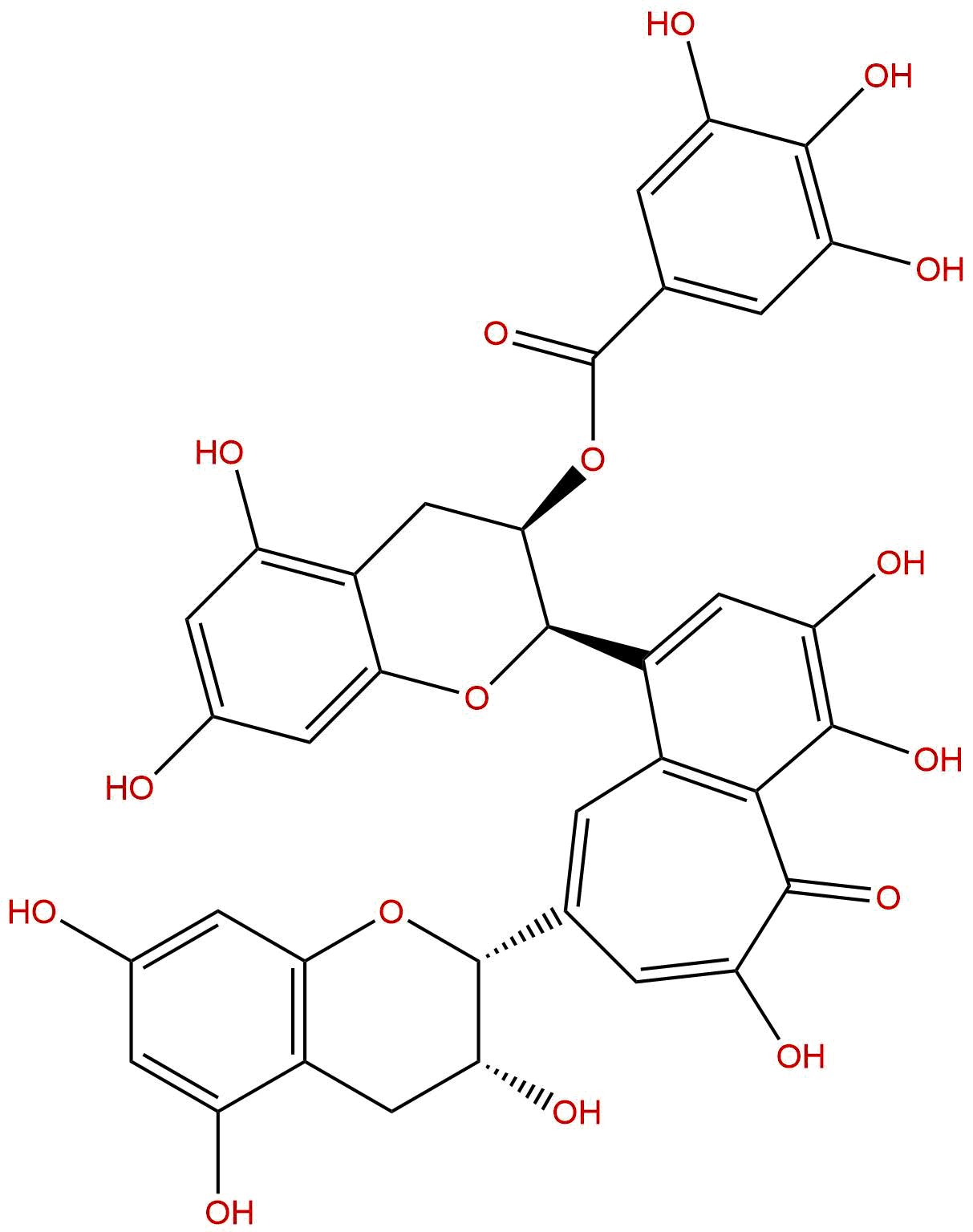
Theaflavin-3'-gallateCAS No.:28543-07-9
|
||||||||||
 |
|
|
||||||||

| Catalogue No.: | BP1386 |
| Formula: | C36H28O16 |
| Mol Weight: | 716.604 |
Product name: Theaflavin-3'-gallate
Synonym name: 3′-O-(3,4,5-Trihydroxybenzoyl)
Catalogue No.: BP1386
Cas No.: 28543-07-9
Formula: C36H28O16
Mol Weight: 716.604
Botanical Source: Black Tea
Physical Description:
Type of Compound: Polyphenols
Purity: 95%~99%
Analysis Method: HPLC-DAD or/and HPLC-ELSD
Identification Method: Mass, NMR
Packing: Brown vial or HDPE plastic bottle
Storage: Store in a well closed container, protected from air and light. Put into refrigerate or freeze for long term storage.
Whenever possible, you should prepare and use solutions on the same day. However, if you need to make up stock solutions in advance, we recommend that you store the solution as aliquots in tightly sealed vials at -20℃. Generally, these will be useable for up to two weeks.
The product could be supplied from milligrams to grams
Inquire for bulk scale.
Description:
Theaflavin-3'-gallate, acts as prooxidants and induces oxidative stress, with carcinoma cells more sensitive than normal fibroblasts.
References:
Basic Clin Pharmacol Toxicol. 2008 Jul;103(1):66-74.
Theaflavin-3-gallate and theaflavin-3'-gallate, polyphenols in black tea with prooxidant properties.
This study compared the in vitro responses of human gingival fibroblasts and of carcinoma cells derived from the tongue to theaflavin-3-gallate (TF-2A) and Theaflavin-3'-gallate (TF-2B), polyphenols in black tea.
METHODS AND RESULTS:
In a cell-free assay, TF-2A and Theaflavin-3'-gallate reacted directly with reduced glutathione (GSH), in a time- and concentration-dependent manner. Intracellular storages of GSH were depleted on treatment of the cells with the theaflavin monomers. Depletion of intracellular GSH was more extensive with TF-2A than with Theaflavin-3'-gallate and was more pronounced in the carcinoma, than in the normal, cells. The toxicities of the theaflavins were potentiated when the cells were cotreated with the GSH depleter, d,l-buthionine-[S,R]-sulfoximine. In the presence of catalase, pyruvate and divalent cobalt, all scavengers of reactive oxygen species, the cytotoxicities of the theaflavins were lessened. TF-2A and Theaflavin-3'-gallate induced lipid peroxidation in the carcinoma cells, whereas in the fibroblasts, peroxidation was evident upon exposure to TF-2A, but not to Theaflavin-3'-gallate.
CONCLUSIONS:
These studies demonstrated that the black tea theaflavin monomers, TF-2A and Theaflavin-3'-gallate, act as prooxidants and induce oxidative stress, with carcinoma cells more sensitive than normal fibroblasts.
HPLC of Theaflavin-3'-gallate

HNMR of Theaflavin-3'-gallate
